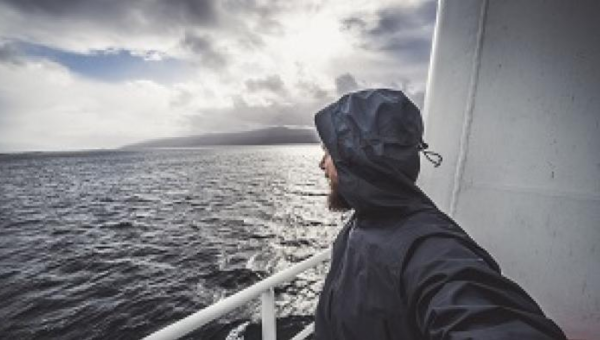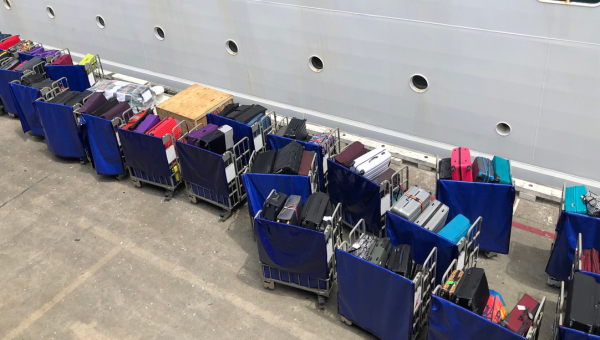Zone of Danger!
Following the COVID-19 pandemic there was a wealth of litigation in the US, including claims for negligent infliction of emotional distress (“NIED”).

US Federal maritime law says that where there has been no physical injury a NIED claim for damages has to pass the Zone of Danger Test. Recent case law usefully shows how the courts decide NIED claims by considering public policy and the Zone of Danger test. The intention behind the approach adopted in these decisions is to ensure that the claims floodgates are not opened.
This article explains what the Zone of Danger Test is and discusses some recent developments in the case law.
The “Zone of Danger Test”
The “Zone of Danger” test was set out in Consolidated Rail Corp. v Gottshall, 512 U.S. 532, 114 S. Ct. 2396, [1994].
The test limits recovery to those:
• Plaintiffs who sustain a physical impact as a result of a defendant’s negligence conduct; or
• Plaintiffs who are placed in immediate risk of physical impact by a defendant’s negligence.
The meaning of "physical impact”
In Metro-North Commuter R. Co. v Buckley, 521 U.S.424, 117 S.Ct.2113, 138 L. Ed. 2D 560 [1997] the words “physical impact”, as used in the Gottshall Test, were considered. In order to discourage trivial claims, the US Supreme Court decided that a plaintiff must manifest some symptom of the feared disease and not just some exposure that poses a future risk.
In the case of Norfolk & W. Ry. Co. v Ayers, 538 U.S. 135, 146, 123 S. Ct. 1210, 155 L. Ed. 2d 261 [2003] the US Supreme Court considered two categories of claim:
- emotional distress claims where there has been no physical injury - which is covered by the zone of danger test, and;
- distress claims brought about by a physical injury.
Recent claims
In re TK Boat Rentals, (Civ. No. 14-1545) (E.D. La. March 21, 2018) The District Court Eastern District of Louisiana considered the claims of two plaintiffs who had not suffered a” physical impact” as defined in the Metro-North case.
The plaintiffs departed as passengers for a fishing trip on the M/V SUPER STRIKE. The vessel was involved in a collision with another vessel. All six passengers alleged emotional distress. Two of the passengers who did not suffer a physical injury in the incident claimed they could recover for emotional distress under general maritime law because they were in the Zone of Danger. The court however confirmed that the Zone of Danger rule is merely a threshold requirement to determine whether a plaintiff is eligible to recover for emotional injuries. Where, as in this case, one of the plaintiffs had not suffered any physical injuries and had not sought or planned to seek any medical treatment, the court found that:
"the record taken as a whole could not lead a rational trier of fact to find that he experienced compensable emotional injuries.”
As to the other plaintiff the court found that they could not discern what injury had been suffered. Both claims were therefore dismissed.
In Weissberger v Princess Cruise Lines, Ltd., 2020 U.S. Dist. LEXIS 123743, [2020] WL 3977938 the court considered whether a passenger could recover damages for emotional distress due to proximity to others infected with COVID-19 and the fear of contracting COVID-19. As the plaintiffs suffered no physical symptoms, the court construed the claim as a claim for NIED and found that the plaintiffs did not satisfy the “Zone of Danger” test.
The case of Parker v Princess Cruise Lines Ltd., Case No. 2:20-cv-03788-RGK-SK came before the Federal Court in the District of California on 18 September 2020. The court confirmed the test set out Gottshall.
In Parker there were two types of passengers
• Those who did not test positive for COVID-19 or show any symptoms; and
• Those who did not test positive but experienced symptoms consistent with COVID-19.Regarding those who did not test positive/without symptoms: the court was satisfied that that they must satisfy the “Zone of Danger” test. Furthermore, the court found that they did not satisfy the first prong of the test: mere exposure to a disease does not meet the physical impact requirement that was established by the Metro-North decision. The claims for damages for emotional distress were dismissed with prejudice.
Regarding those who did not test positive but who displayed symptoms: these claimants fell into the second category of claim set out in Ayers. Since their emotional distress claims were brought by a physical injury, there was no requirement to satisfy the zone of danger test. However, the Court nevertheless decided that their claims were found to fail on causation as they did not allege that they contracted COVID-19 nor allege when they began to experience symptoms which would allow the court to draw reasonable inference that Princess’ conduct caused the alleged harm. The court therefore dismissed their claims without prejudice, so giving them the opportunity to amend the defects in their claim.
In the Estate of Gerald Paul v Celebrity Cruises Inc, 21-201814-CIV-LENARD Adlyn Poe Paul (as personal representative and surviving spouse) asked the Federal Court to consider whether the estate of Mr Gerald Paul - on the basis that he contracted COVID-19 on board the ship and subsequently passed away - could claim for pre-illness fear of contracting the virus.
Celebrity argued that the “Zone of Danger” test governed any attempt to recover damages for NIED under maritime law. The plaintiff argued that the “Zone of Danger” test allows recovery for NIED where a plaintiff has sustained a physical impact or has been placed in immediate risk of physical harm. Celebrity argued that only subsequent emotional distress was recoverable and not pre-infection emotional distress.
The court considered the relevant case law and the similarities to Crawford v. Princess Cruise Lines Ltd., Case No. 2:20-cv-05546-RGK-SK, [2020] WL 7382770 and Kantrow II, [2021] WL 1976039. In both cases the plaintiffs also contracted COVID-19 and sued to recover emotional distress damages for their pre contracting fear. Those claims were rejected with prejudice. The court in Gerard Paul found that, as explained in Wiesberger, the Metro-North case has established that a plaintiff cannot recover for NIED based solely on their proximity to individuals with COVID-19 and the resulting fear of contracting the disease. On 11 January 2021 the Fifth Circuit Court of Appeals considered the relevant test. In Re: Deepwater Horizon No. 20-30300,2021, WL 96168. The Plaintiffs were on a fishing trip about 15 miles away at the time of the explosion when they saw the rig on fire and heard and felt a sonic boom. They arrived at the scene 20 minutes later and helped with the rescue attempt. The plaintiffs claimed NIED. The court stated:
“Whether a plaintiff is at immediate risk includes both objective and subjective components; the plaintiff must “objectively [be] within a Zone of Danger” and subjectively “fear at the time of the incident that his life or person was in danger Anselmi v Penrod Drilling Corp, 813 F Supp, 436,442 (E.D, La.1993).”
The Plaintiffs alleged that they were in constant threat from another explosion that would send debris towards them and that there were rumblings from the deep.
Once again, the Court held that the Zone of Danger Test had not been met. At no time were the Plaintiffs closer than 100 to 200 feet from the rig and that the rumblings did not place the plaintiffs at the site of the accident and explosions and therefore found that the plaintiffs did not face immediate risk of harm and were not within the Zone of Danger.
Comments and Conclusions
The Zone of Danger test was really brought to the forefront and tested during the COVID-19 outbreak The cases referred to above, and especially those judicial decisions dealing with COVID-19 and pre-incident fear, can only be good news for ship owners /operators, especially when dealing with a large casualty claim.
It is good to see that public policy prevails and it is hoped that the courts continue to maintain their stance to prevent unnecessary and unwarranted litigation.





